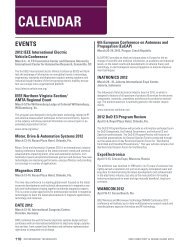2011 EMC Directory & Design Guide - Interference Technology
2011 EMC Directory & Design Guide - Interference Technology
2011 EMC Directory & Design Guide - Interference Technology
You also want an ePaper? Increase the reach of your titles
YUMPU automatically turns print PDFs into web optimized ePapers that Google loves.
H o o l ih a n<br />
testing & test equipment<br />
ceiver is to have it calibrated a number<br />
of times (it could be over a period of<br />
years). Then, you can divide the "mean<br />
value of n measurements" by the square<br />
root of "n" to arrive at the standard<br />
deviation of the mean. If we could<br />
lower the two receiver 1.5 dB values<br />
to 1.0 dB,(in tandem with lowering the<br />
LISN contribution), we would arrive<br />
at a combined standard uncertainty of<br />
1.45 dB or an Expanded Uncertainty<br />
of 2.90 dB.<br />
All the other sources of uncertainty<br />
in the conducted emission table are<br />
1.0 dB or less, and, it will be difficult<br />
to lower those to make a significant<br />
change in the total MU for conducted<br />
emissions.<br />
So, we can conclude that it would<br />
be very difficult to get the Expanded<br />
Uncertainty of conducted emissions<br />
below 3 dB.<br />
Radiated Emissions<br />
30 MHz to 300 MHz with a biconical<br />
antenna in the vertical polarization – 3<br />
& 10 meters<br />
Again, the above table assumes<br />
typical values from LAB34 and CISPR<br />
16-4-2 and is ordered from the largest<br />
contributor to the smallest contributor.<br />
In order to reduce the measurement<br />
uncertainty for radiated emissions, an<br />
<strong>EMC</strong> lab should start with the largest<br />
contributors and try to reduce their<br />
values.<br />
The table also assumes a horizontally-polarized<br />
biconical antenna having<br />
a uniform pattern in the vertical plane<br />
so that the antenna factor height deviation<br />
and the antenna factor directivity<br />
difference contributions are zero.<br />
(Note - a Complex antenna would have<br />
non-zero components for both of those<br />
factors).<br />
The Site Imperfections is the largest<br />
contributor to the Radiated Emission<br />
Measurement Uncertainty. In order<br />
to reduce that, labs can use antennas<br />
with smaller antenna factors, receivers<br />
with smaller measurement uncertainties,<br />
and semi-anechoic chambers with<br />
improved anechoic material. It would<br />
then be reasonable for the lab to lower<br />
that contribution to plus or minus 3<br />
dB. Substituting that value into the<br />
equation, gives us a Combined Standard<br />
Uncertainty of 2.26 dB and an<br />
Expanded Uncertainty of 4.52 dB or a<br />
reduction of 0.48 dB from the original<br />
5.00 dB. Again, one of the reasons for<br />
the relatively small reduction in the expanded<br />
uncertainty is the large divisor<br />
value for site uncertainty, that is, the<br />
square root of 6 (2.449) for a triangular<br />
probability distribution.<br />
The Mismatch factor can be reduced<br />
by increasing the attenuation<br />
of the well-matched two port network<br />
preceding the receiver, however, the<br />
penalty of that maneuver is a reduction<br />
in measurement sensitivity. Let's assume<br />
we can add some attenuation to<br />
the front-end of the receiver and lower<br />
the Mismatch contribution to -0.65.<br />
Substituting this value in combination<br />
with the Site Imperfection reduction,<br />
allows us to lower the Expanded Uncertainty<br />
to 4.3 dB or a total reduction<br />
from the original 5.00 dB of 0.7 dB.<br />
If we then look at the next two<br />
biggest contributions, we have, again,<br />
the Receiver Pulse Amplitude and<br />
the Receiver Pulse Repetition. If we<br />
again, using the same technique as for<br />
conducted emissions, lower the two<br />
receiver 1.5 dB values to 1.0 dB,(in<br />
tandem with lowering the Site Imperfections<br />
and the Mismatch contributions),<br />
we would arrive at a combined<br />
standard uncertainty of 1.83 dB or an<br />
Expanded Uncertainty of 3.66 dB. This<br />
would be a reduction of 1.34 dB from<br />
the original value.<br />
The Remaining Factors are all 1.0 dB<br />
or less and they would be difficult to<br />
lower in sufficient amplitude to make a<br />
significant difference to the Expanded<br />
Measurement Uncertainty for radiated<br />
emissions.<br />
Thus, we conclude that the minimum<br />
value for Expanded Uncertainty<br />
for radiated emissions, with presentday<br />
equipment, is around 3.5 dB.<br />
suMMary<br />
Measurement Uncertainty of the instrumentation<br />
used for emission testing<br />
in an <strong>EMC</strong> Lab is an important part<br />
of the lab’s overall technical capability.<br />
We know that Measurement Uncertainty<br />
is a relatively new concept and<br />
has only been around the <strong>EMC</strong> Labs of<br />
the world for about 20 years.<br />
We see from the above two specific<br />
examples that it is difficult to lower<br />
the Expanded Uncertainty values of a<br />
typical <strong>EMC</strong> Lab for both conducted<br />
emissions and radiated emissions.<br />
We saw that reducing the two largest<br />
values in the table of standard<br />
uncertainties for conducted emissions<br />
only lowered the Expanded Uncertainty<br />
by about 0.74 dB so that the<br />
Expanded Uncertainty for conducted<br />
emissions was approximately 3.0 dB.<br />
We also observed that lowering<br />
the top four contributors to the Combined<br />
Standard Uncertainty value for<br />
radiated emissions, only lowered the<br />
Expanded Uncertainty value from 5 dB<br />
to around 3.5 dB.<br />
We concluded that even when a lab<br />
is logically concentrating on lowering<br />
its Equipment Measurement Uncertainty<br />
by reducing the largest contributors<br />
to the Combined Standard<br />
Uncertainty for emission testing, it<br />
is difficult to significantly lower the<br />
overall Expanded Uncertainty of the<br />
instrumentation of the <strong>EMC</strong> lab for<br />
conducted and radiated emissions.<br />
Daniel Hoolihan is a past president of the<br />
IEEE <strong>EMC</strong> Society. He has been a member of<br />
the Board of Directors since 1987 and has held<br />
numerous leadership positions in the society.<br />
Hoolihan is also active on the ANSI Accredited<br />
Standards Committee on <strong>EMC</strong>, C63 as Vice<br />
Chairman. He was co-founder of Amador<br />
Corporation (1984-1995). He can be reached at<br />
DanHoolihan<strong>EMC</strong>@aol.com. n<br />
Your weekly<br />
<strong>EMC</strong> update!<br />
<strong>Interference</strong> <strong>Technology</strong> eNews<br />
provides news, standards updates,<br />
buyers' guides, product<br />
developments and more direct to<br />
your inbox once a week.<br />
Join the growing number of<br />
subscribers to stay up to date –<br />
subscribe online today.<br />
www.interferencetechnology.com<br />
interferencetechnology.com interference technology 33


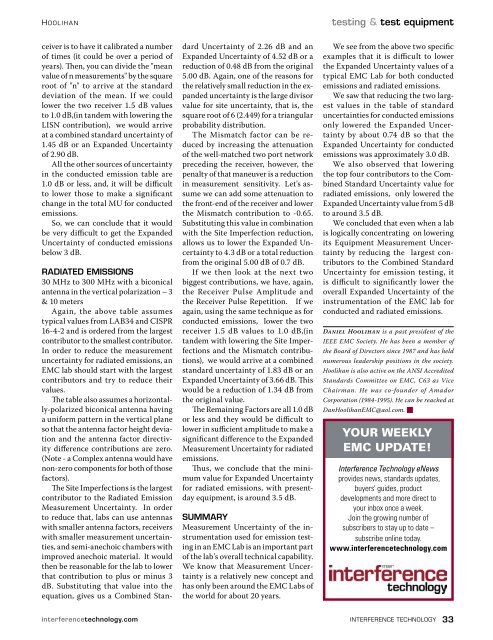

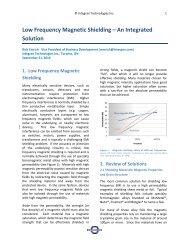

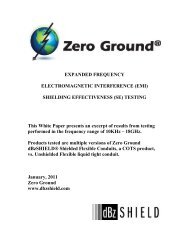
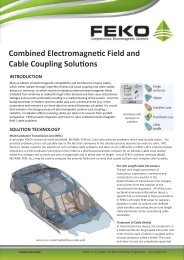

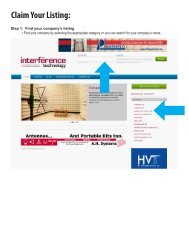

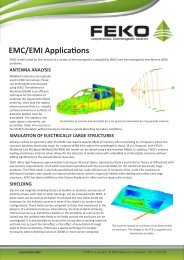
![[ thursday ] morning sessions 8:30 am-noon - Interference Technology](https://img.yumpu.com/23176841/1/190x247/-thursday-morning-sessions-830-am-noon-interference-technology.jpg?quality=85)
